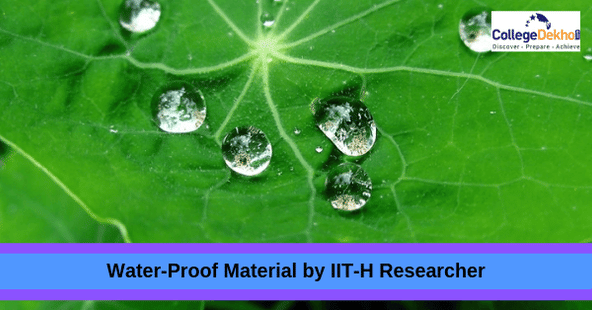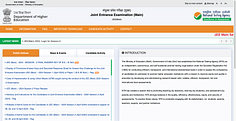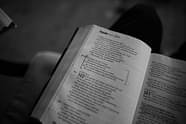IIT Hyderabad researchers have developed a cheap waterproofing material by coating flash ash. Coating fly ash is a waster by-product from coal-based thermal power plants.

A team of researchers from the Indian Institute of Technology Hyderabad (IIT-H), have been able to develop an inexpensive waterproof material. With the help of a waste by-product of a thermal power plant that is coal-based. The product, known as fly ash along with stearic acid which is a surfactant, creates this waterproof material.
As per sources, fly ash is a material that in itself dissolves in water, however, the combination of the waste by-product with the acid, creates a hydrophobic surface. The stearic acid is comprised of two parts, the head, and the tail. Here, the head is an extremely hydrophilic part, however, the tail of the acid is a hydrophobic part. Therefore, when the fly ash is combined with the stearic acid, the head of the stearic acid combines with the fly ash, however, the tail remains free, which forms the hydrophobic part of the final product. It is the high number of tails that makes the entire product a hydrophobic material.
Sources state that the fly ash can be found in varying sizes. They added that the use of different sized fly ash will result in witnessing different reactions. Fly ash is a material that varies in size from 100 nanometers all the way to a few microns. This results in creating varying roughness on the material. Sources stated that the varying sizes of the fly ash help in mimicking two naturally-occurring hydrophobic materials, viz. The lotus leaf and the rose petal.
When talking about the rose petal, the hydrophobic nature of the petal allows water droplets to be attached to the surface of the petal. The characteristics of the surface of the petal also ensure that the water does not get absorbed into the petal. In terms of the Lotus leaf, the hydrophobic nature of the leaf does not let the water droplet stay on the surface. The characteristics of the leaf, which is smooth, force water droplets to roll off at even the slightest angle.
Dr Atul Deshpande of the Department of Material Science and Metallurgical Engineering at IIT-H stated that the usage of similar and uniform-sized particles creates a surface with a lot of gaps. In other words, the space between two particles is more, which allows for water particles to penetrate the material and adhere to the surface, just like it does with the rose petal. Due to the gaps, the water remains on the surface, even at 90° or 180° as well.
The co-author of the paper, Dr Mudrika Khandelwal, faculty at IIT-H further added that when different sized fly-ash particles are used, the space between the particles reduces. This means that the water particles are unable to penetrate between the particles and stick to the surface, just like the case of the Lotus leaf. Further, the reduction of the spaces between the particles introduces air pockets between the material and the water droplet. The air pockets further are what causes extreme hydrophobicity.
The author of the paper, Urbashi Mahanta, Doctoral student from the institute, stated that with a specific combination of the stearic acid with the fly ash, will help in achieving superhydrophobicity. She added that to be able to create the two different hydrophobicity, they had used a simple technique.
Also Read:IIT Hyderabad Graduate Develops Arm-Rehabilitation Device
Dr Deshpande stated that the degree of hydrophobicity was affected by the drying temperature that had been used. In other words, the melting point of stearic acid is above 69°. Therefore, when the drying temperature had been higher than the melting point of the acid, the hydrophobicity had been higher. Since the acid tends to melt after 69°, there is better coverage of the material, thus resulting in a smoother surface, wherein the water gets repelled better. With the hydrophobic characteristics of the material, it is also easier to clean the surface. He added that the material can be applied to any surface with the help of some kind of adhesive.
Also Read: Economical Catalyst for Producing Bio-fuel Developed by IIT Hyderabad Researchers
The introduction of such kind of waterproof material could be useful and eco-friendly material. With its hydrophobic characteristics, the need to use a lot of water to clean other dirty surfaces will reduce, thus help in saving water, especially in the automotive industry. With further research and study conducted in the field, researchers will be able to find a way to create a new non-toxic waterproof material, which can be applied to utensils that are used for eating. This can help in the reduction of the need to wash dishes.


 Follow us
Follow us














